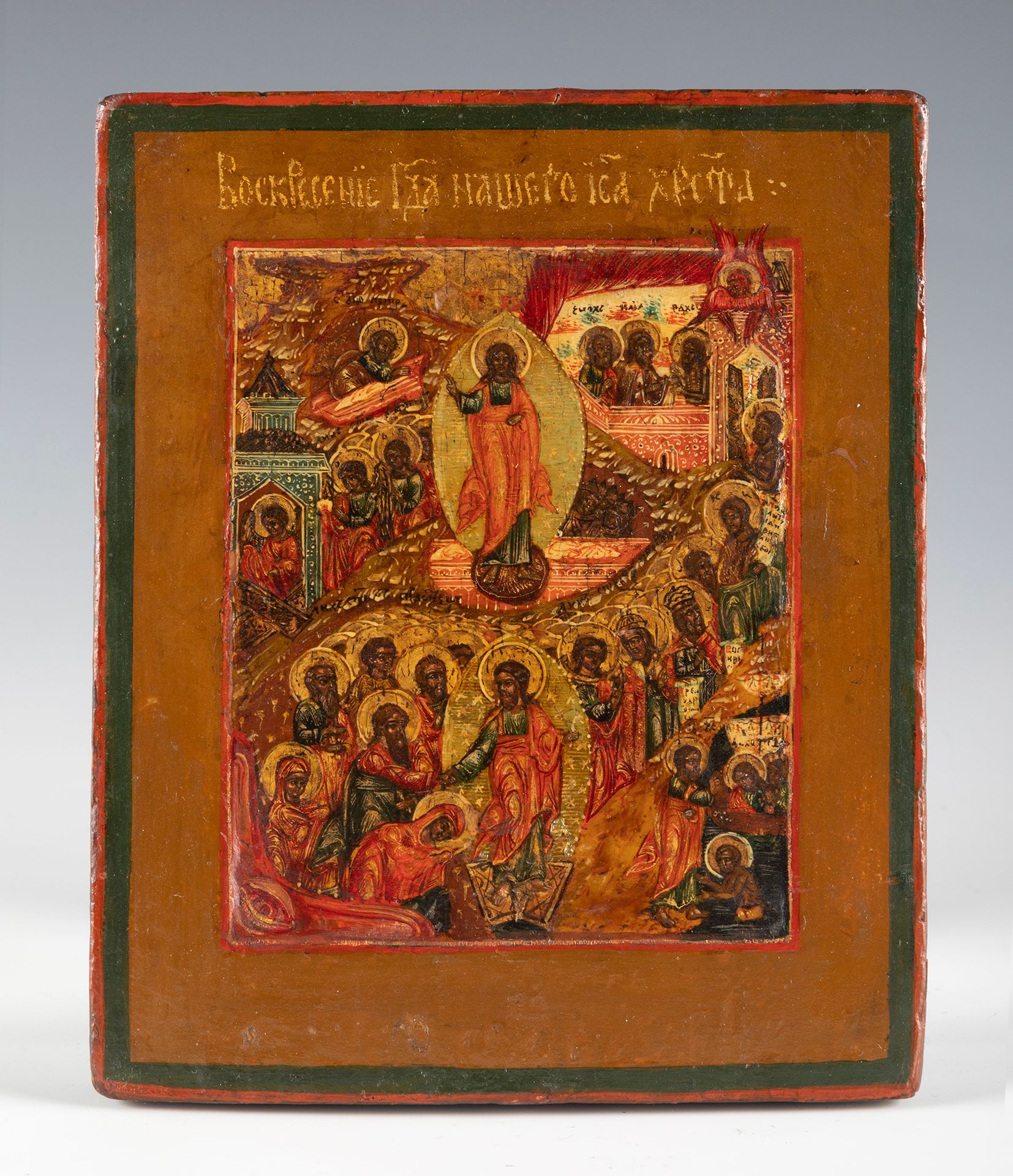Description
Russian School, Old Believers, late 18th century. "Resurrection of Christ, Christ's Descent into Hell". Tempera, gold leaf on panel. Measurements: 18 x 14 cm. Descent of Christ to hell is one of the most important representations in the Christian iconography. This passage has been known in Ancient Rus since the 11th century, although it became most popular in the second half of the 14th century. Iconography of this New Testament passage finally developed in the 17th century in Moscow workshops. In this period the icon reached its maximum complexity, combining the New and Old Testament passages, and at the same time composing the scenes of the Resurrection and Christ's descent into hell into one. The icon of interest, a canonical image established in the 17th century, depicts the resurrection and Christ's descent into hell simultaneously. The dynamic composition of this small icon has an ascending character, achieved by superimposing the nimbuses of the saints, which lead the viewer's gaze from the broken portal of hell to the figure of Christ enclosed in the magic mandorla, this being the main image of the whole composition. This anonymous painter's mastery in depicting architectural and natural details is fascinating, as is his use of colour. In Russian icon painting, colour has an extremely important symbolic charge, sometimes more profound than the images themselves. In the case of the present work, the predominance of red tones over the rest of the range is evident. The symbolism of red is very heterogeneous, and this icon is a clear example of this, since at the same time it represents both the Passion of Christ and identifies the martyrs with their red chiton, and serves to mark the borders of hell, represented by the open mouth of a monstrous dragon. The title of the icon can be found on the outer border. All the figures are accompanied by the inscriptions, and hold their hand in the position of blessing with two fingers. These features, together with the visual appearance and general stylistics of the icon, lead to the conclusion that it may belong to the workshops of the Old Believers, settled mainly in the Pomorie-Ural area.
19
Russian School, Old Believers, late 18th century. "Resurrection of Christ, Christ's Descent into Hell". Tempera, gold leaf on panel. Measurements: 18 x 14 cm. Descent of Christ to hell is one of the most important representations in the Christian iconography. This passage has been known in Ancient Rus since the 11th century, although it became most popular in the second half of the 14th century. Iconography of this New Testament passage finally developed in the 17th century in Moscow workshops. In this period the icon reached its maximum complexity, combining the New and Old Testament passages, and at the same time composing the scenes of the Resurrection and Christ's descent into hell into one. The icon of interest, a canonical image established in the 17th century, depicts the resurrection and Christ's descent into hell simultaneously. The dynamic composition of this small icon has an ascending character, achieved by superimposing the nimbuses of the saints, which lead the viewer's gaze from the broken portal of hell to the figure of Christ enclosed in the magic mandorla, this being the main image of the whole composition. This anonymous painter's mastery in depicting architectural and natural details is fascinating, as is his use of colour. In Russian icon painting, colour has an extremely important symbolic charge, sometimes more profound than the images themselves. In the case of the present work, the predominance of red tones over the rest of the range is evident. The symbolism of red is very heterogeneous, and this icon is a clear example of this, since at the same time it represents both the Passion of Christ and identifies the martyrs with their red chiton, and serves to mark the borders of hell, represented by the open mouth of a monstrous dragon. The title of the icon can be found on the outer border. All the figures are accompanied by the inscriptions, and hold their hand in the position of blessing with two fingers. These features, together with the visual appearance and general stylistics of the icon, lead to the conclusion that it may belong to the workshops of the Old Believers, settled mainly in the Pomorie-Ural area.
